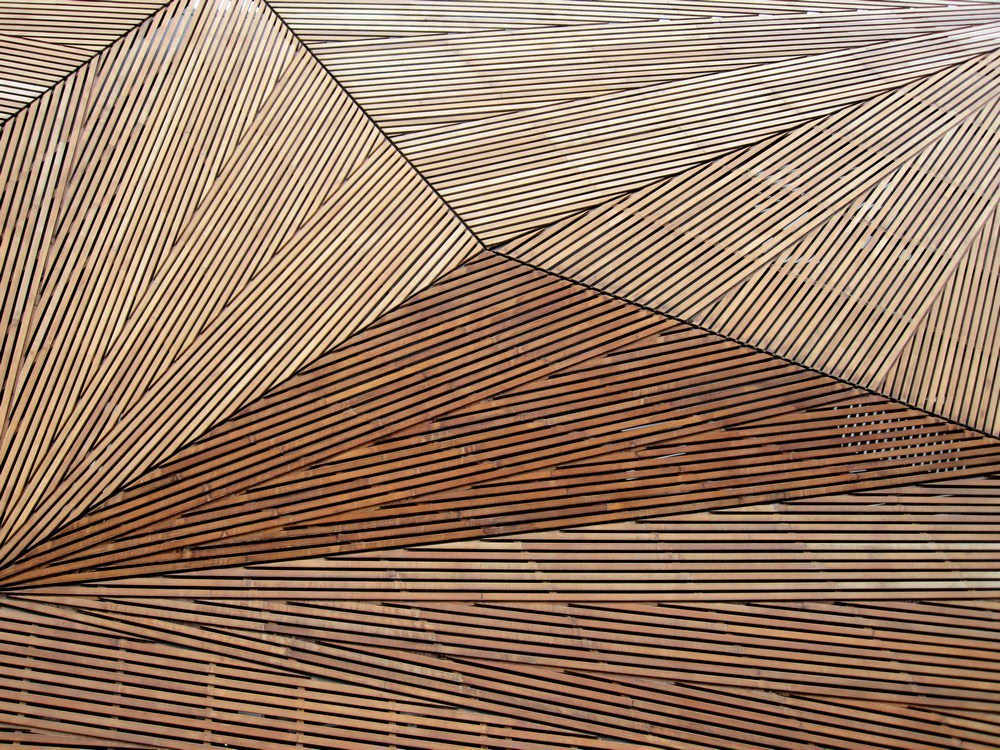Last Updated on April 3, 2024 by teamobn

Climate change is a major issue humanity is facing right now. A major source of climate-changing emissions is the different building materials we use in architecture.
Contents
6 Eco-Friendly Materials Redefining Architecture
Builders are increasingly turning to sustainable practices in architecture and construction to reduce their ecological footprint.
They can minimize the impact of construction on the environment and energy-efficient buildings while enabling cost savings. Sustainable materials are the new architectural trend, and below, we discuss them further.
Recycled Steel
Recycled steel is obtained from scrap metal that is processed and transformed into new steel products, diverting waste from landfills. From roofing, cladding, and interior finishes to incorporating recycled steel from skyscrapers to residential homes, an architect can use this material in different ways.
Using recycled steel reduces the demand for virgin steel production, conserving natural resources and minimizing the carbon footprint. It is also highly durable and offers the same strength as virgin steel, making it suitable for buildings.
Its superior resistance to corrosion, fire, and weather conditions makes it even more suitable for use in structural components.

Bamboo
As biophilic designs grow in popularity, bamboo has found several applications in modern architecture. Unlike traditional timber, bamboo grows rapidly and abundantly, which makes it highly renewable.
It is suitable for both structural and decorative applications. Bamboo is also widely used in furniture and interior design. It can also be woven or pressed into decorative elements like screens, panels, and light fixtures, adding a natural elegance to interior spaces.
Bamboo is not just renewable, but strong and flexible as well, making it a good material to sustain seismic shocks and protect against earthquakes, and its tensile strength is at par with steel. While it looks lightweight, it offers a combination of resilience and strength.
Bamboo also grows rapidly, and some species can grow several feet in a day, which makes it highly renewable and can be harvested sustainably.
The cultivation of bamboo also helps with carbon sequestration and prevents soil erosion. Its extensive root system stabilizes soil, providing ecological benefits even when it is commercially grown for its timber.
Hempcrete
Hempcrete, also called hemp-line or hemp concrete, is a concrete alternative. It is composed of hemp fibers, lime, and water. Known for its lightweight and durability, it is highly sustainable and eco-friendly, as it utilizes the inner woody fibers of the hemp plant as its primary ingredient.
If you wish to regulate indoor temperatures and reduce heating and cooling costs, hempcrete might be your desired material. Its porous structure allows for natural breathability, creating a comfortable and healthy indoor environment and making your building highly energy-efficient.
During its curing process, the lime in hempcrete absorbs and permanently locks carbon dioxide into the material. This allows the removal of carbon from the air.
Engineered Wood
Lumber is a popular building material choice, but concerns over its sustainability loom large over its use. Engineered wood, or composite wood, is a sustainable alternative to lumber. Engineered wood is created by bonding together strands, particles, fibers, or veneers of wood with adhesives to form composite materials.
While solid timber requires large and old trees for production, engineered wood can be made from smaller, fast-growing trees or even the wood waste produced from other processes. It reduces the demand for timber, discouraging deforestation.
Engineered wood has several subtypes: plywood, oriented strand board, laminated veneer lumber, and composite panels. It also requires less energy to produce, making it cost-effective. Engineered wood products are designed to optimize wood’s inherent strength.
They also mitigate its weaknesses, making the material suitable for structural applications. It is versatile and offers design flexibility. Machining, cutting, and shaping engineered wood is very feasible. You can also try painting engineered wood to suit your aesthetic needs.

Photovoltaic Glass
Also known as solar glass, photovoltaic glass integrates solar cells into transparent or semi-transparent glass panels.
These solar cells receive sunlight throughout the day and convert it into electricity, providing a source of clean, cheap, renewable energy for the building while maintaining a sleek and modern aesthetic. Photovoltaic glass does not compromise natural light transmission or obstruct views, so it allows you to generate renewable energy while allowing natural light in
You can use photovoltaic glass not only on building faces but also on your windows and skylights. Solar windows can also incorporate smart technology to become more energy-efficient by using sensors and automated shading systems.
By generating energy from the sunlight, photovoltaic glass reduces reliance on fossil fuels to produce electricity and facilitates resource conservation. You don’t need to extensively mine, extract, and transport any material to produce energy, decreasing your dependence on the grid.
This means you are better equipped against supply disruptions and power outages as you have an alternative energy source to fall back on.
Rammed Earth
Rammed earth construction is not a new technique. It is an ancient architectural technique used in several buildings of note, including the Great Wall of China, and its sustainability, durability, and aesthetic appeal have caused its resurgence in recent years.
In rammed earth construction, you compact layers of moistened sand, gravel, clay, and stabilizers like lime or cement into solid structures using manual or mechanical tampers. Buildings made through this technique are sturdy and energy-efficient.
Rammed earth is an environmentally friendly building material that utilizes locally sourced earth and minimal energy for construction. By reducing the need for energy-intensive materials like bricks, it minimizes the carbon footprint of a building. Rammed earth walls also have excellent thermal mass properties and can absorb, store, and slowly release energy over time.
This makes it an excellent protection material against extreme weather, providing insulation without mechanical heating or cooling systems. Rammed earth structures are also long-lasting (like the Great Wall) and resist weathering, earthquakes, hurricanes, and wildfires.
Endnote
As we rapidly use existing, scarce building materials, the need to discover sustainable building materials has become a focal point in modern architecture. When determining a material’s utility in architecture, builders must evaluate its durability, strength, aesthetics, and sustainability.
We have created and discovered many such materials through modern technology, like recycled steel, hempcrete, engineered wood, and photovoltaic glass. Indigenous building materials like bamboo and rammed earth are also resurging due to their sustainable nature.








